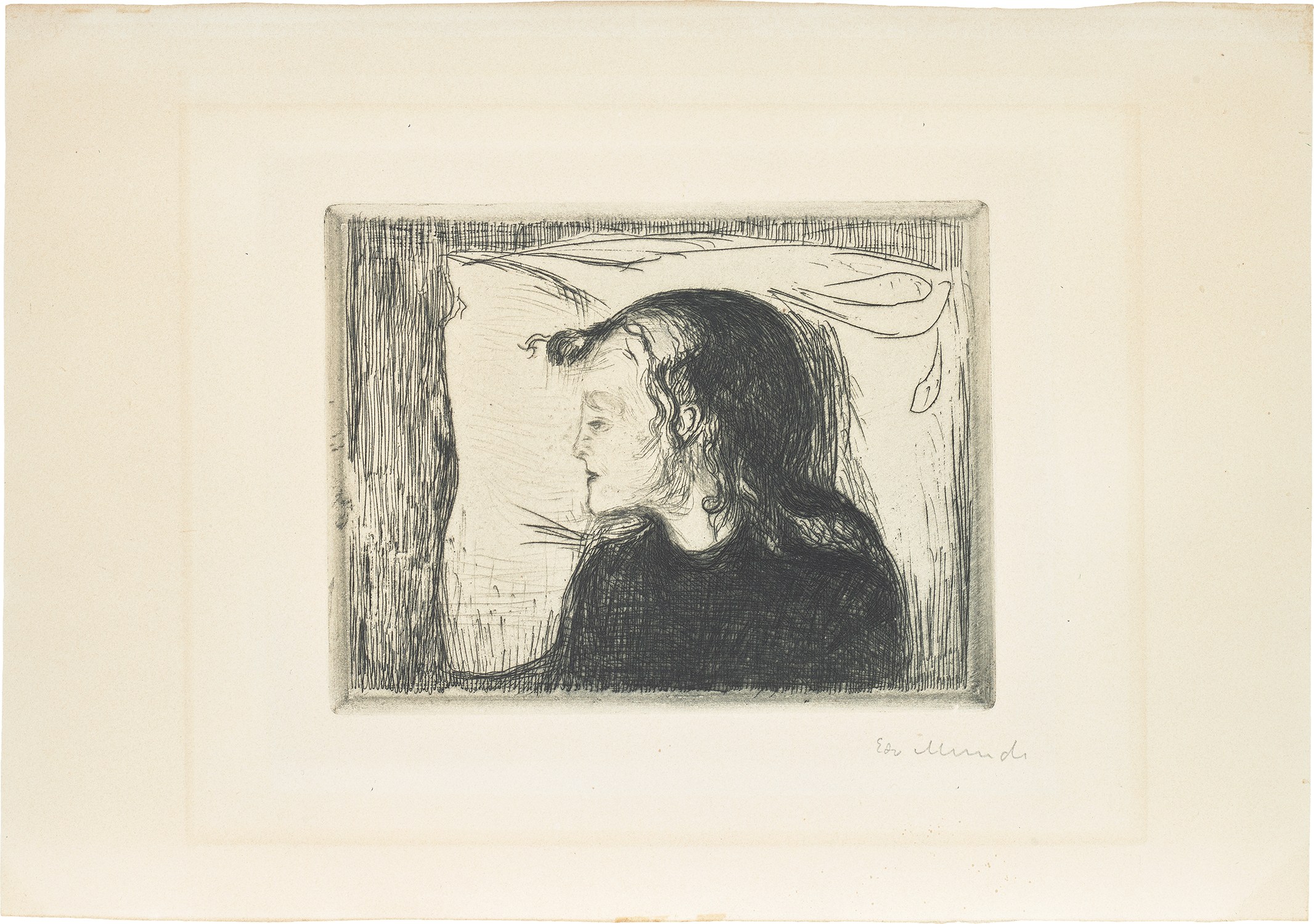



16
Edvard Munch
The Sick Child (Det syke barn) (W. 59.d, S. 60)
1896
Etching and drypoint, with surface tone, inked to the outer edge of the plate, on heavy cream wove paper, with trimmed margins.
I. 13.8 x 18.1 cm (5 3/8 x 7 1/8 in.)
S. 25 x 35.6 cm (9 7/8 x 14 in.)
S. 25 x 35.6 cm (9 7/8 x 14 in.)
Signed in pencil, a later impression printed by the artist or by Scheel, one of approximately 20 impressions, framed.